Let’s see— so, November 26th was the last time I posted to this blog. That seems sterotypical of blogdom: start off strong, interest gradually wans, topics fade and the next thing you know, it’s 2008. Well, if December went by in a blur, it’s because we had so much food to prepare and eat that I was too busy to write about it. Or, I was too lazy. Either or. Therefore, I’m re-starting the posting with a bang, the climax of our December, indeed, the climax of our epicurean year: Christmas Eve dinner.
Long has it been tradition in my family to have a heavily “sauced” happy hour, followed by an elaborate dinner on Christmas eve before attending atheist mass (a.k.a. a James Bond movie). This is when the good dishes make their annual appearance, when no cut of meat is too expensive, when four-course meals are warranted. I relish this dinner and look forward to it with more anticipation than any other Christmas treat. Presents? meh. Eggnog lattes, sure, I’ll have a few. Three days worth of menu planning, grocery shopping and food preparation? Be still my beating heart.
This year, since Marc and I decided to have a California Christmas on our own, we opted to continue those traditions, minus the mass, which we substituted with Christmas music by a crackling wood fire. The menu planning actually started about a month and a half earlier when we finally made the big-ticket purchase of The French Laundry cookbook, signed by Thomas Keller. Oh, The Book. How I am enamoured of The Book. It calls to me in the mornings, when the sun in shining through the window onto the love seat by the fireplace, where I can sit with my cappucinno perched on the armrest and reverently read it, relishing every page. I take such pleasure in perusing the fastidious recipes, all the labour-intensive details that go into making one dish, trying to imagine how a person can be so singularly focused on food as to come up with such fantastic ideas for preparation. With much anxiety and trepidation did I construct my first French Laundry dish (which I shall describe in a subsequent post), but the first try gave me the confidence to attempt and FL recipe for this hallowed feast. I could only imagine having the stamina for one such dish, though— for the rest, we turned to simpler fare. Thus, our menu:
Dungeness Crab Salad with Cucumber Jelly, Grainy Mustard Vinaigrette, and Micro Arugula
Duck Confit with Fried Arkansas Black Apples
Lentils with herbs and garlic
Brava Ginger Cakes
Guess which one is Thomas Keller’s. I mean, who makes cucumber jelly? Who even thinks up such a thing? We had to make cucumber juice and cut wee cucumber diamonds to delicately float in the gêlée. We drove across the Bay in order to go to our favourite butcher for the duck legs and found the whole, cooked Dungeness in the fish market next door. It took several hours to de-meat the crab and put together the whole layered affair. It was ridiculously laborious and wonderfully decadent which, I suppose, is really à propos of Christmas.
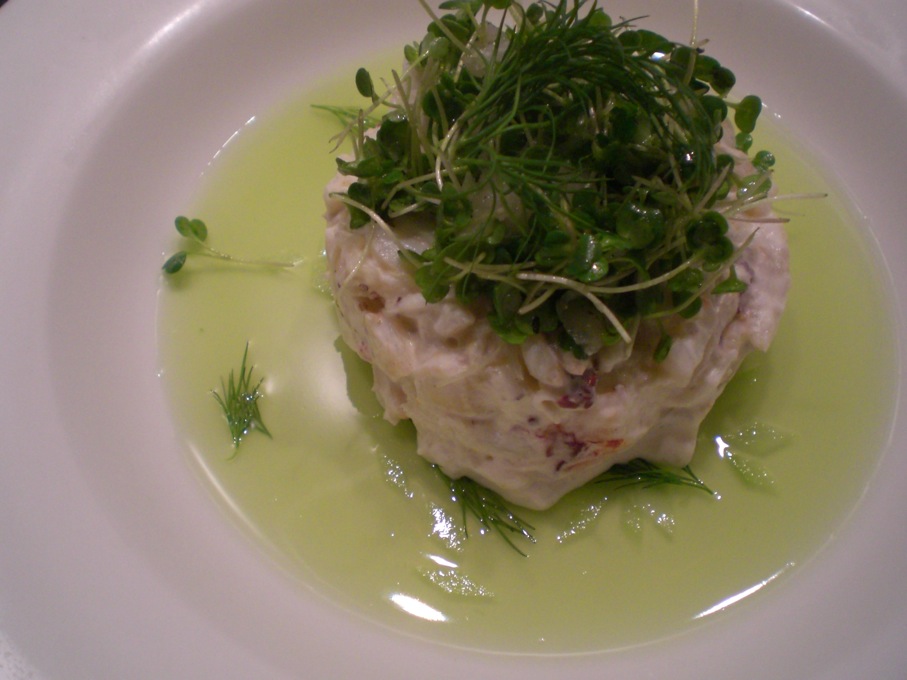
The confit is something I’ve never tried. Years ago, when Mom & Dad were first living in France, Mom received a gift from someone that, no doubt, seemed normal to a Norman but confused the hell out of a Canadian: a large jar of duck fat. Mom offered to give it to me when we visited as she had no real use for it and I turned it down as couldn’t think of what I would ever do with several pounds of duck fat. Now, I get it. Confit is duck cooked in its own fat for, like, ever. For such a simple dish, this is one of the classics by which I have been somewhat intimidated in the past. It’s so French and, therefore, carries an air of complication about it. I had never even attempted to find a recipe for duck confit as I figured it was something beyond reach of the home cook- don’t you need special tools or applicances or something? Some secret underground technique for masterfully crafting this ancient dish? A Julia Child? And then I saw the recipe in a Bon Appétit magazine, where they proclaimed it the “Technique of the Year” and promised “rich results” for a “surprisingly simple” preparation. That was enough for me— first, because I simply coudn’t finish 2007 without having partaken in the technique of the year, and second, if ever there was an occasion to make such a meal, it was here and now: San Francsico at Christmas.
We weren’t too worried about finding duck fat hereabouts and indeed had no trouble in getting some from our butcher, purchased by the pound from an enormous bucket of fat at the base of the refrigerated case. 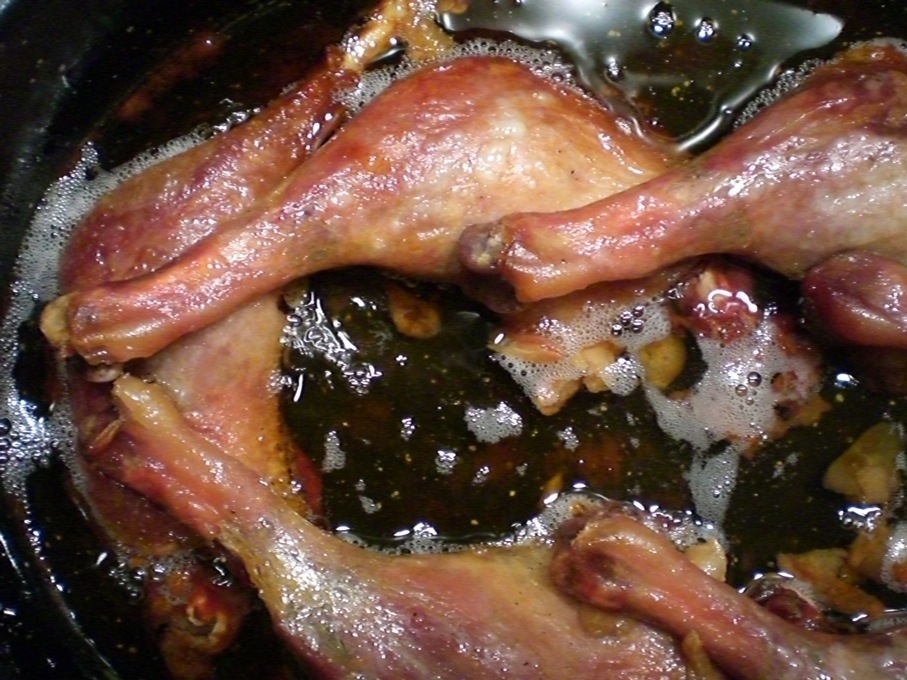 After marinating the duck pieces in salt and garlic overnight, Marc melted down the fat (I suppose I should refer to it as “rendered”), threw the duck legs in and chucked the whole thing in the oven: that is basically all that it needed, which makes me wonder how it is that I could have been so intimidated and misinformed about it in the past. Many deliciously aromatic hours later, we had the most unctuous, flavourful, outrageously extravagent duck that I’ve ever had. With the lentils and the sweet-tart apples, it absolutely melted in the mouth. Clearly, duck fat is the way to go. And as an added bonus, we got to keep the leftover duck sealed in its own congealed fat in the back of the fridge, ready for a quick meal any time this month. Amazing!
After marinating the duck pieces in salt and garlic overnight, Marc melted down the fat (I suppose I should refer to it as “rendered”), threw the duck legs in and chucked the whole thing in the oven: that is basically all that it needed, which makes me wonder how it is that I could have been so intimidated and misinformed about it in the past. Many deliciously aromatic hours later, we had the most unctuous, flavourful, outrageously extravagent duck that I’ve ever had. With the lentils and the sweet-tart apples, it absolutely melted in the mouth. Clearly, duck fat is the way to go. And as an added bonus, we got to keep the leftover duck sealed in its own congealed fat in the back of the fridge, ready for a quick meal any time this month. Amazing!
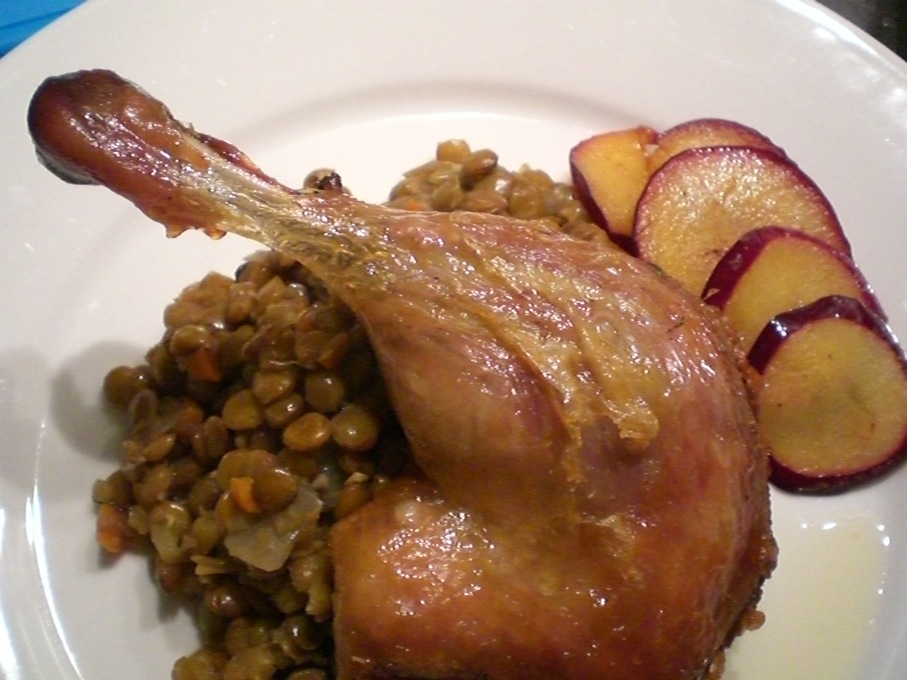
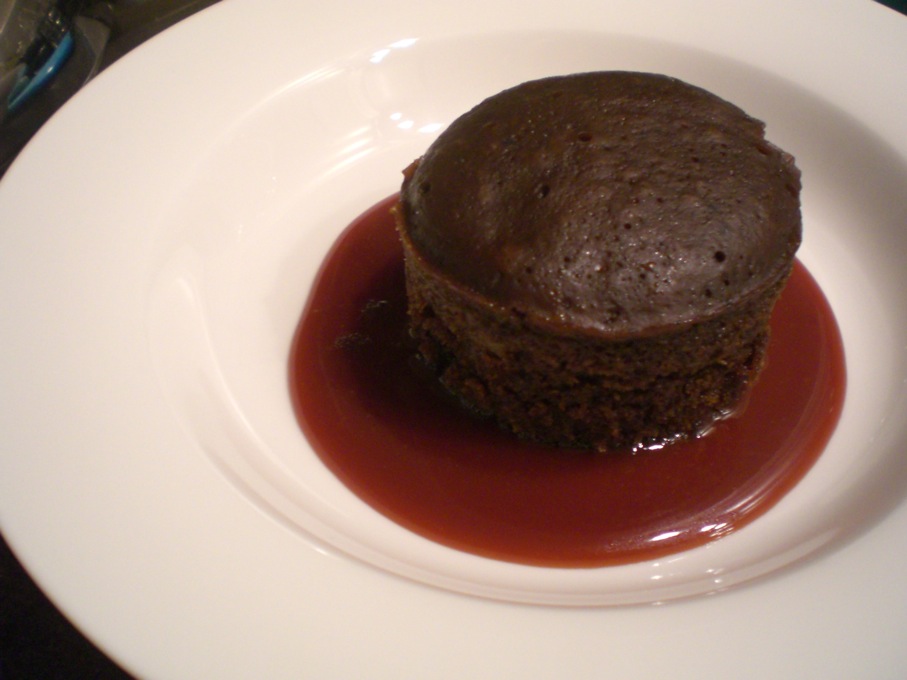 The ginger cakes, modeled off of our old favourites at Brava bistro in Calgary, have never disappointed. Slowly steamed on the stove top, they emerge from their ramekins as moist puddings to hover in our homemade caramel sauce. This is my desert island dessert, certainly befitting of a Christmas Eve repast. They are so good, in fact, that they may make an appearance on New Year’s Eve. Ginger totally goes with champagne.
The ginger cakes, modeled off of our old favourites at Brava bistro in Calgary, have never disappointed. Slowly steamed on the stove top, they emerge from their ramekins as moist puddings to hover in our homemade caramel sauce. This is my desert island dessert, certainly befitting of a Christmas Eve repast. They are so good, in fact, that they may make an appearance on New Year’s Eve. Ginger totally goes with champagne.
And over glasses of port, all snug by the fire, we languished in our gluttony as we contemplated our Christmas Day feast.
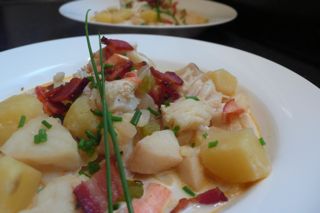 We bought a 4-lb. lobster and we named him Gavin. He cost $31.96 + tax. He was too big to fit in any of our pots, but we filled the largest one with water anyway and when it was boiling, we pushed Gavin in and held the pot lid closed. He struggled. That was the worst part about making lobster chowder.
We bought a 4-lb. lobster and we named him Gavin. He cost $31.96 + tax. He was too big to fit in any of our pots, but we filled the largest one with water anyway and when it was boiling, we pushed Gavin in and held the pot lid closed. He struggled. That was the worst part about making lobster chowder.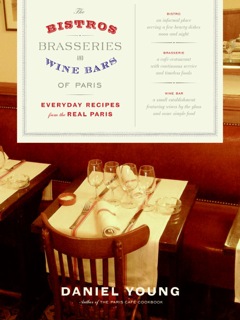
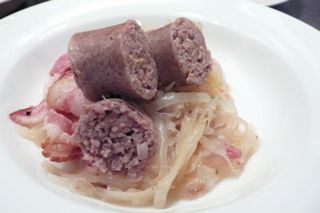

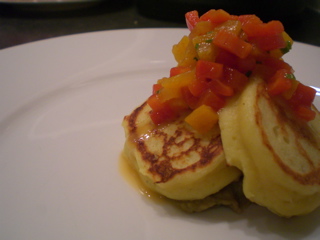
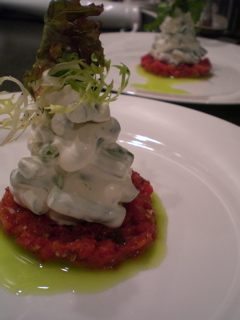
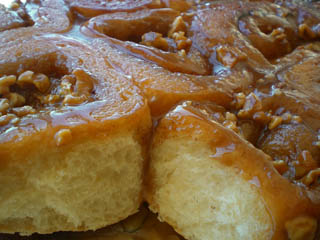 I was eyeing a bread baking book at Chapters before leaving on our around the world trip. Now that we’ve returned and I’ve been making bread again, I picked up
I was eyeing a bread baking book at Chapters before leaving on our around the world trip. Now that we’ve returned and I’ve been making bread again, I picked up 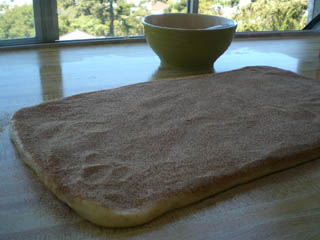 gave Janet a heart attack and that was in addition to the 1/2 cup of sugar that was rolled into the buns. Baking the buns was a bit of a challenge because the dough need to cook through to the bottom and the glaze needs to carmelize without turning into rock candy. In the end, most of the glaze was a little too stiff, but still tasty. If I had rotated the pan half way through and took them out five minutes earlier, they would have been perfect bakery-quality buns. Surprisingly, the glaze softened over the next 48 hours.
gave Janet a heart attack and that was in addition to the 1/2 cup of sugar that was rolled into the buns. Baking the buns was a bit of a challenge because the dough need to cook through to the bottom and the glaze needs to carmelize without turning into rock candy. In the end, most of the glaze was a little too stiff, but still tasty. If I had rotated the pan half way through and took them out five minutes earlier, they would have been perfect bakery-quality buns. Surprisingly, the glaze softened over the next 48 hours.